Abstract
1 Three normal subjects were infused with Sar1-ala8-angiotensin II (Saralasin, P113) whilst on a high sodium (200 mEq + normal diet) and a low sodium (10 mEq diet) intake. 2 On the high sodium intake when angiotensin II and plasma renin activity (PRA) were suppressed, P113 infusion (5-10 mug kg-1 min-1) caused a slight rise in BP and a marked drop in urine flow and sodium excretion, with a fall in glomerular filtration rate, and effective renal plasma flow. 3 On the low sodium intake, when angiotensin II and PRA were increased, P113 infusion (5-10 mugkg-1 min-1) caused no change in blood pressure, urine flow or sodium excretion. However, when P113 was infused at an incremental rate starting at 0.25 mug kg-1 min-1 there was a fall in standing BP, which was maximal at an infusion rate of 1 mug kg-1 min-1, and this fall in standing BP was largely abolished as the rate of infusion was increased to 10 mug kg-1 min -1. 4 These results show firstly that angiotension II is involved in maintaning standing blood pressure during dietary sodium depletion in normal man and secondly that P113 does have agonist as well as antagonist activity in normal man, the effect depending on the level of angiotension II and sodium intake. When looking for angiotensin II mediated hypertension it may ne important to use an incremental rate of infusion of P113 as the agonist activity of larger doses may mask its hypotensive action.
Full text
PDF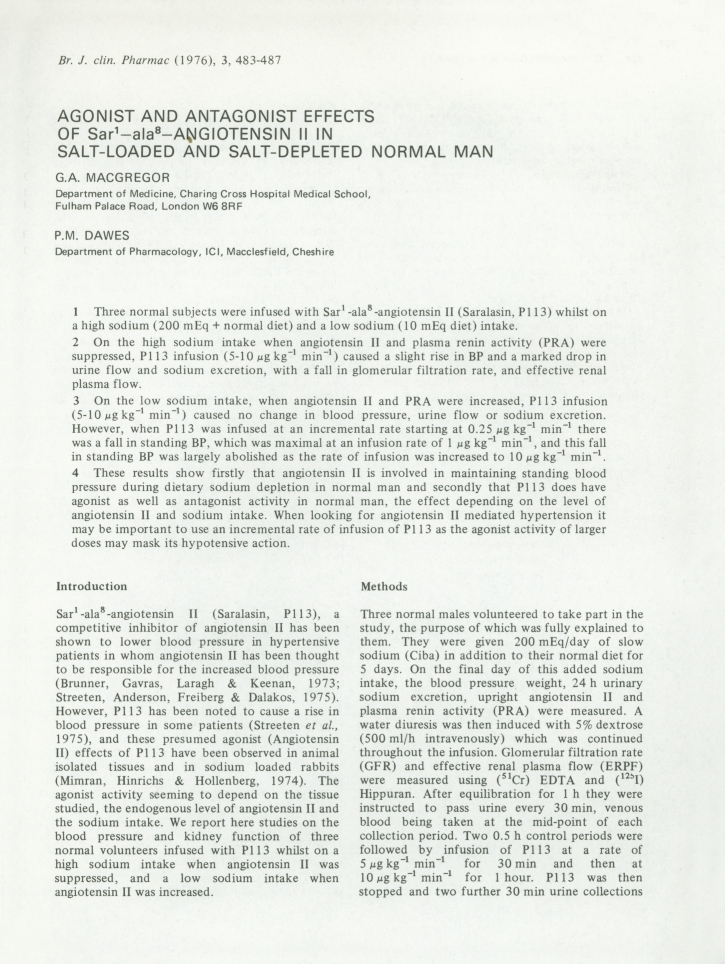
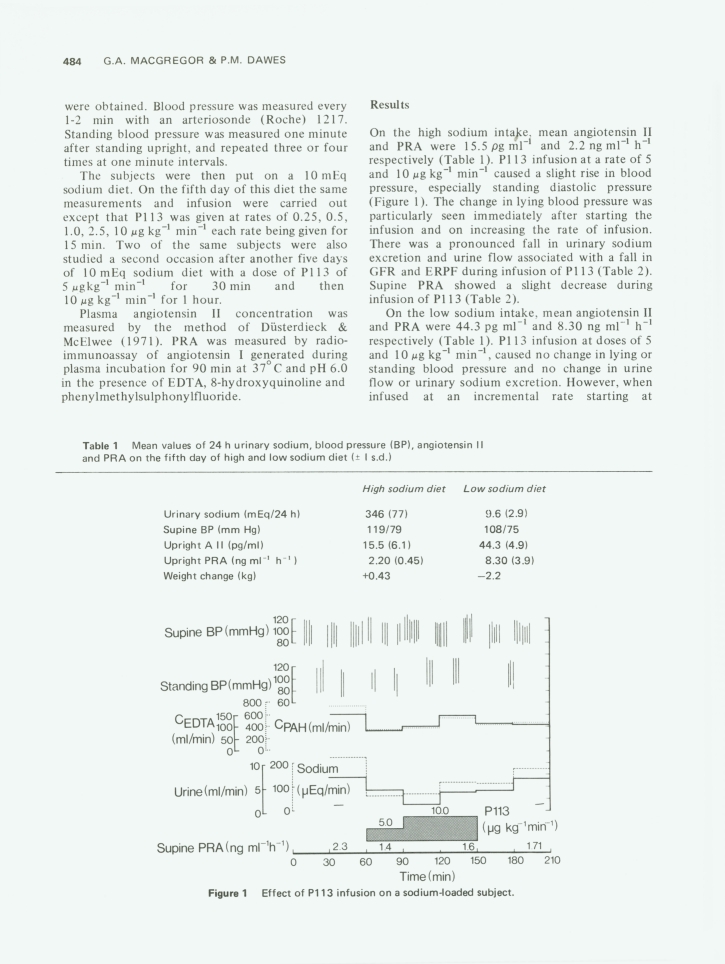
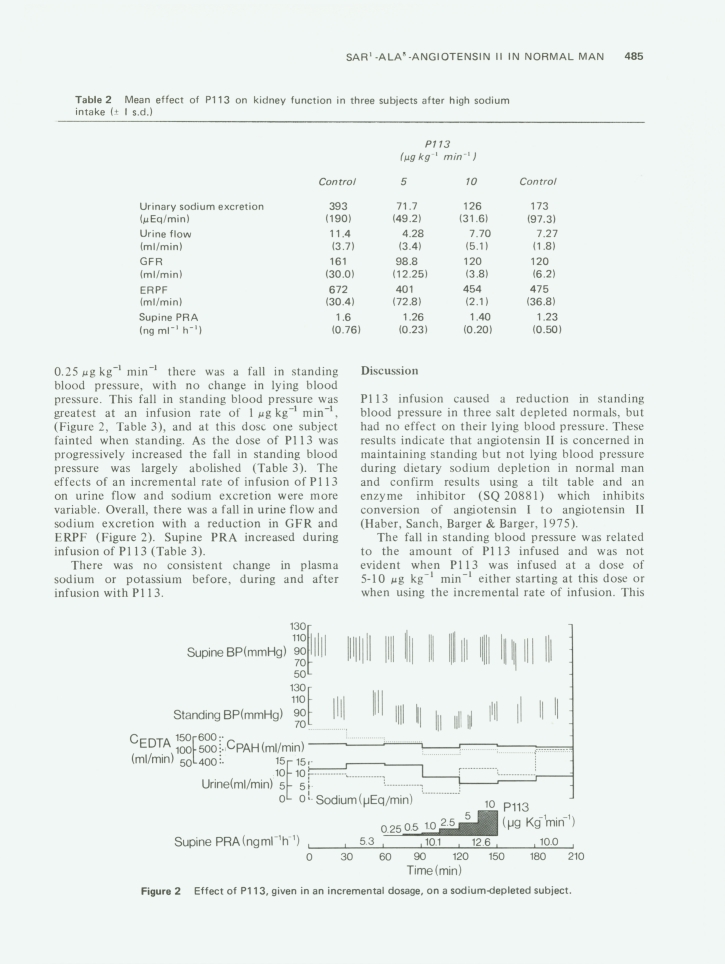
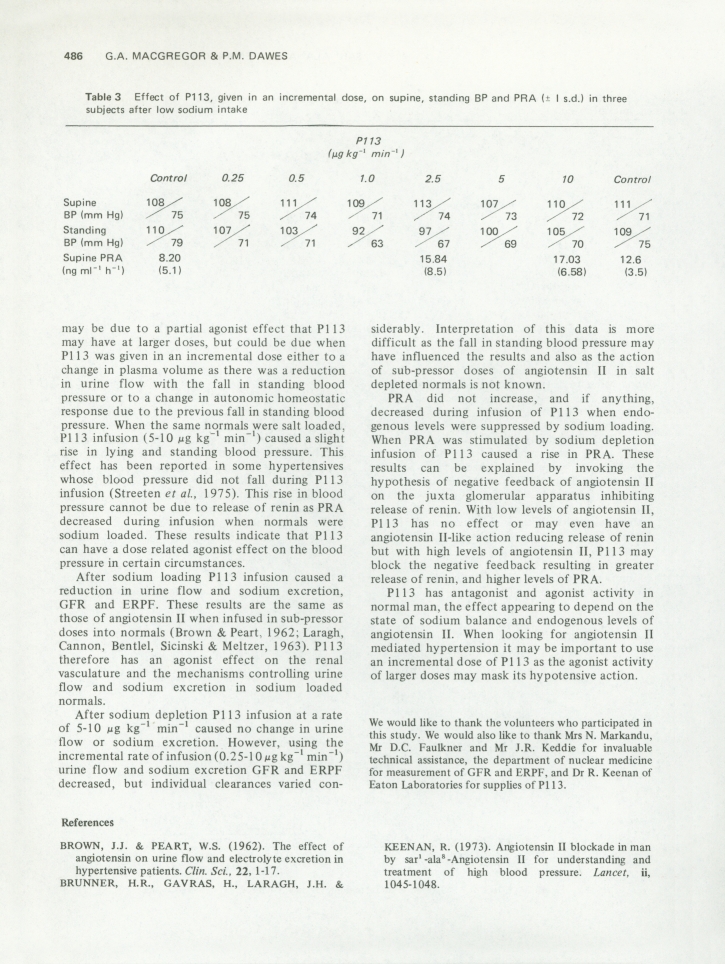
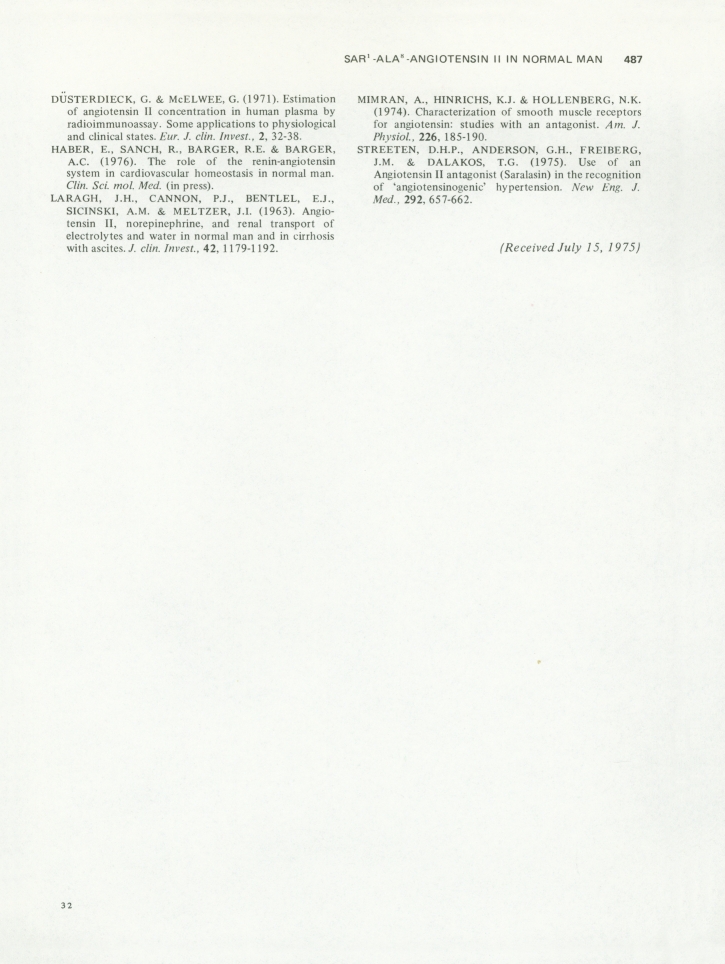
Selected References
These references are in PubMed. This may not be the complete list of references from this article.
- BROWN J. J., PEART W. S. The effect of angiotension on urine flow and electrolyte excretion in hypertensive patients. Clin Sci. 1962 Feb;22:1–17. [PubMed] [Google Scholar]
- Brunner H. R., Gavras H., Laragh J. H. Angiotensin-II blockade in man by sar1-ala8-angiotensin II for understanding and treatment of high blood-pressure. Lancet. 1973 Nov 10;2(7837):1045–1048. doi: 10.1016/s0140-6736(73)92657-3. [DOI] [PubMed] [Google Scholar]
- Düsterdieck G., McElwee G. Estimation of angiotensin II concentration in human plasma by radioimmunoassay. Some applications to physiological and clinical states. Eur J Clin Invest. 1971 Nov;2(1):32–38. doi: 10.1111/j.1365-2362.1971.tb00565.x. [DOI] [PubMed] [Google Scholar]
- Laragh J. H., Cannon P. J., Bentzel C. J., Sicinski A. M., Meltzer J. I. ANGIOTENSIN II, NOREPINEPHRINE, AND RENAL TRANSPORT OF ELECTROLYTES AND WATER IN NORMAL MAN AND IN CIRRHOSIS WITH ASCITES. J Clin Invest. 1963 Jul;42(7):1179–1192. doi: 10.1172/JCI104803. [DOI] [PMC free article] [PubMed] [Google Scholar]
- Mimran A., Hinrichs K. J., Hollenberg N. K. Characterization of smooth muscle receptors for angiotensin: studies with an antagonist. Am J Physiol. 1974 Jan;226(1):185–190. doi: 10.1152/ajplegacy.1974.226.1.185. [DOI] [PubMed] [Google Scholar]
- Streeten D. H., Anderson G. H., Freiberg J. M., Dalakos T. G. Use of an angiotensin II antagonist (saralasin) in the recognition of "angiotensinogenic" hypertension;. N Engl J Med. 1975 Mar 27;292(13):657–662. doi: 10.1056/NEJM197503272921301. [DOI] [PubMed] [Google Scholar]


